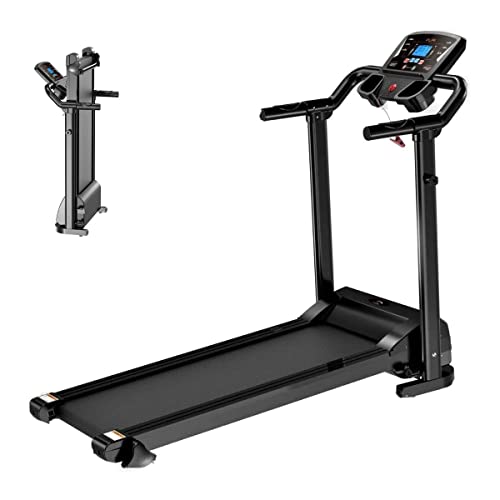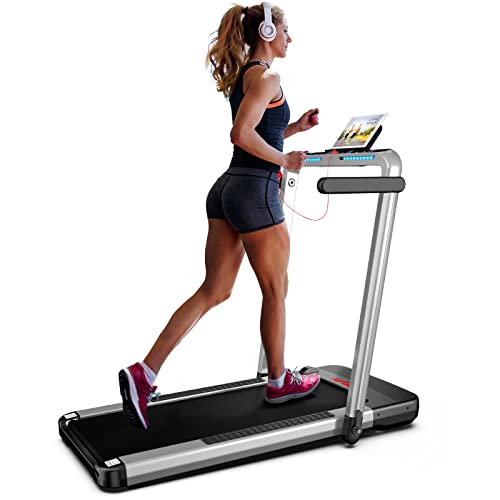
Treadmill Brands
Add a review FollowOverview
-
Founded Date August 8, 1939
-
Sectors Garments
-
Posted Jobs 0
-
Viewed 177
Company Description
15 Inspiring Facts About Walking Machine The Words You’ve Never Learned
The Walking Machine: A Comprehensive Guide to Your Fitness Companion
In today’s busy world, where time is a luxury, maintaining a constant exercise regimen can be an obstacle. For lots of, a walking machine– typically called a treadmill Home— functions as an ideal physical fitness buddy. This short article provides an extensive take a look at walking machines, including their benefits, types, maintenance tips, and frequently asked questions.
Why Choose a Walking Machine?
Walking machines provide a useful and efficient way to integrate cardiovascular exercise into day-to-day life. Here are a number of key advantages:
- Convenience: Walking machines allow individuals to exercise anytime, regardless of weather or time constraints. They are ideal for busy schedules.
- Adaptability: Users can stroll, jog, or perform at their own pace and intensity.
- Security: Walking machines provide a lower threat of injury compared to outdoor walking or running, especially for beginners or those recovering from injuries.
- Tracking Progress: Many treadmills included built-in monitors that track metrics like speed, distance, and calories burned.
Kinds Of Walking Machines
When thinking about a walking machine, it’s important to select the best type based upon private fitness goals and space restraints. Below are the main types of walking machines:

| Type | Description |
|---|---|
| Manual Treadmills | These machines do not have a motor, and users require to stroll or run to rotate the belt. |
| Electric Treadmills | Powered by an electric motor, allowing users to set the speed and slope easily. |
| Folding Treadmills | Designed for simple storage, these treadmills can be folded up when not in usage. |
| Desk Treadmills | Perfect for a dual work and exercise environment, these compact machines allow walking while working. |
| Slope Trainers | These enable users to imitate uphill walking, enhancing exercise strength and calorie burn. |
Choosing the Right Walking Machine
Selecting the best walking machine can substantially impact motivation and efficiency. Here are some factors to consider:
Key Features to Look For
- Motor Power: A powerful motor guarantees a smooth and consistent workout. For occasional walkers, a 1.5 HP motor is typically adequate; for heavier use, search for 3.0 HP and above.
- Belt Size: A larger and longer belt supplies more area for a comfortable stride. Requirement sizes vary from 16 inches broad and 50 inches long.
- Incline Options: Adjustable slope settings can mimic walking or running uphill, increasing the strength of the workout.
- Shock Absorption: Good shock absorption reduces the danger of joint injuries and boosts comfort.
- Console Features: Look for integrated workouts, heart rate monitors, and connectivity features like Bluetooth for a more appealing experience.
Budget plan Considerations
Walking machines can be found in a wide variety of prices, depending upon features and construction quality. Here’s a rough spending plan breakdown:
| Price Range | Features |
|---|---|
| Under ₤ 300 | Standard manual or small electric treadmills with minimal functions. |
| ₤ 300 – ₤ 700 | More innovative electric treadmills with incline, medium power motors, and much better guarantees. |
| ₤ 700 – ₤ 1500 | Top quality electric treadmills with larger built-in screens, substantial functions, and guarantees. |
| ₤ 1500 and above | High-end models offering advanced innovation, functions, and resilient construction for severe fitness enthusiasts. |
Upkeep Tips for Your Walking Machine
To ensure longevity and ideal performance of a walking machine, think about the following maintenance ideas:
- Regular Cleaning: Dust and sweat can accumulate on the machine and the belt. Clean down the surface areas and clean the belt routinely.
- Lubrication: Depending on the design, lubing the running belt regularly can avoid wear and tear. Examine the maker guidelines for recommended lubrication schedules.
- Evaluation: Periodically inspect the machine for loose screws or worn parts. Tighten and replace as needed.
- Calibration: Occasionally, inspect the calibration of your machine’s metrics to guarantee they offer precise information.
- Correct Use: Follow the maker’s recommendations for weight limits and operational guidelines.
FAQs About Walking Machines
1. Are walking machines a great workout?
Yes, walking machines provide an outstanding cardiovascular workout, can aid with weight loss, and improve general health.
2. How frequently should I use a walking machine?
Go for a minimum of 150 minutes of moderate-intensity aerobic activity per week, which can easily be accomplished with routine sessions on a walking machine.

3. Can I drop weight on a walking machine?
Yes, integrating a walking machine regimen into a healthy diet can promote weight-loss, particularly if integrated with intervals and incline training.
4. Is it safe for seniors to utilize a walking machine?
Yes, walking machines can be safe for elders with low-impact settings and safety functions like handrails. Nevertheless, people need to talk to their health care supplier before starting any workout program.
5. What’s the distinction in between a treadmill and a walking machine?
The term “walking machine” typically describes a treadmill meant for walking, while “treadmill” can refer to machines utilized for various intensities, including running.
With their adaptability and convenience, walking machines can substantially enhance one’s physical fitness journey. By carefully picking the best type, guaranteeing correct upkeep, and including various exercise strategies, users can optimize their walking machine’s advantages. Similar to any exercise program, consistency is crucial to accomplishing lasting fitness results.


